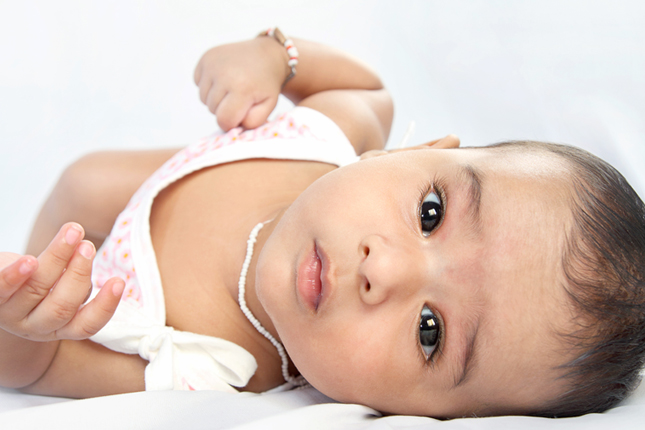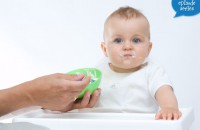The Boob Group
How Breastfeeding Reduces SIDS
[00:00:00]
Please be advised, this transcription was performed from a company independent of New Mommy Media, LLC. As such, translation was required which may alter the accuracy of the transcription.
SUNNY GAULT: This episode of The Boob Group is brought to you by RuminaNursingwear. Hands-free pumping and nursing tanks and bras to support your breastfeeding goals. Visit www.pumpandnurse.com and save 20% with promo code BOOBGROUP20.
[Theme Music]
LEILANI WILDE: We have all heard about SIDS in one way or another, we may even know someone who has lost their baby because of it. It’s sad, scary and unimaginable. What can we do about it? Can breastfeeding our babies actually make a difference? Today we are talking with Teresa Pitman, leader of La Leche League in Canada and author of many books including the Womanly Art of Breastfeeding and the new Sweet Sleep. This is The Boob Group.
[Intro/Theme Music]
LEILANI WILDE: Welcome to The Boob Group, broadcasting from the Birth Education Center of San Diego. The Boob Group is your weekly, online, on the go support group for all things related to breastfeeding. I'm your host, Leilani Wilde, I'm also an IBCLC and owner of Leilani’s Lactation and Doula Services.
Is there a breastfeeding topic you would like to learn more about? Send us your story ideas through our website at www.newmommymedia.com. That’s also where we can ask specific breastfeeding questions to our team of experts. Email us or call our voicemail at 619-886-4775 and our experts will answer your question on a future episode. Here is Sunny with more information on how to become a virtual panelist on our show.
SUNNY GAULT: Yes, we want you guys to be part of The Boob Group and there’s a lot of different ways that you can do that Leilani was telling you about our ‘Ask the Experts’ segments where our experts can answer your questions, all you have to do is go to our website, select an expert and send the question off.
There are a couple of other segments that I want to tell you about. We have a segment called ‘Boob Oops’ and it’s where we share some fun at breastfeeding stories, some things that may have happened to you guys where maybe it’s a little bit embarrassing of a story, sometimes that you feel comfortable sharing with our audience, so that’s a great way.
We have a new segment called ‘Mama Hacks’ where we talk about various hacks for breastfeeding or pumping, little things that help you in your journey that you want to share with others and make breastfeeding or pumping a little bit easier for you, so that’s an opportunity.
And we are always looking for recommendations when it comes to breastfeeding apps. There is a lot of different apps out there, some are better than others. As you guys know we have an app for the Boob Group where you can actually listen to our episodes. So we are interested in knowing what you guys are using so we can share that information with other breastfeeding mamas.
So if you are interested in any of these segments, the best thing to do is go to our website, go to the contact link on our website and just send us an email and you can participate in the segments and then hopefully, we’ll be using that content on our shows, so you’ll become internet famous or something like that.
LEILANI WILDE: Sounds good. So we’re going to introduce our panelists and today we have Amy with us, Amy…
AMY: Hallo, I’m Amy and this is my first child and she is almost two months and I am 25.
LEILANI WILDE: Good. And Sara…
SARA: My name is Sara, I’m 28 and this is my first child Braxton.
LEILANI WILDE: Hi Braxton.
[Theme Music]
SUNNY GAULT: Okay so before we start today’s show, we’re going to talk about… this is actually a fun video that I found that I actually posted to our Boob Group Facebook page but I thought it was really cool and it was worth talking about, just to talk about how things have changed over the years.
So you guys saw this on Sesame Street especially those of you listening that have other children that may be a little bit older, you are probably very familiar with Sesame Street and one of the characters that has been on there for years and years her character name is Maria, her real life name is Sonia. She is actually leaving the show and she’s retiring and one of the things that she’s been talking about as part of her retirement, it’s been getting some press is, ‘What’s your most memorable moments from Sesame Street?’ right?
And one of the things that she’s talking about is an episode, now this happened in the late ‘70s but it was an episode and she was actually on the show talking to I think, I don’t think it was an actual character on the show, I think it was like one of the little kids on the show about breastfeeding. And at the time, she was literally breastfeeding her own infant, she just had a baby and she was talking about the importance of breastfeeding, the baby was latched, you really couldn’t see anything but and tell you what, it was like two or three minutes of talking about breastfeeding and the importance of breastfeeding and actually using terms that I really don’t think Sesame Street would use nowadays. Like saying, “The milk is coming from my breast.”
I just don’t Sesame Street doing that nowadays, but I was so fascinated by this segment. Again, I posted it to our Facebook page so if you guys are interested go and check it out. But I kind of want to get some feedback from the ladies here in the studio and also on the phone. What do you think about this, if you saw Sesame Street doing that nowadays would you be surprised, what were your thoughts?
AMY: I think that’s really cool because it kind of helps normalize it and teaches kids at a young age that it’s okay and then hopefully as they are older it normalizes breastfeeding and makes it more of a normal thing to see in public because right now there’s a lot of heat about breastfeeding in public, is it okay, is it not okay? I mean obviously it’s okay but there’s a lot of people that don’t think it is okay so I think it would help normalize it in society for sure.
SUNNY GAULT: At least breastfeeding on Sesame Street’s okay. Now you could tell me how to get to it you know. So Sara what do you think?
SARA: I agree, I mean I think that the more that’s on TV and saying that it’s okay and good is going to make it societally accepted more so.
SUNNY GAULT: Well, I think what’s so good about this too is that it’s teaching kids at a young age that it’s okay right? It’s kind of getting that into our mindset that you know, when the infant’s a toddler age.
LEILANI WILDE: Well you know if you think about it, there’s probably more kids today watching Sesame Street that are having moms breastfeeding. So it is probably more the norm right now for that age group, that is the young ones that are breast feeding. So I think though back in the ‘70s, that was huge controversy I’m assuming because it was in the ‘60s when they introduced formula. And so they were pushing formula so much so that she must have been a really strong leader in breast feeding for her to stand out there, I’d love to do a little research on that. Bet you she was a La Leche League leader or something.
SUNNY GAULT: She might have been. Teresa any thoughts on this?
TERESA PITMAN: Well my kids are quite old so actually remember seeing this originally and Sesame Street was known to be very pro-breast feeding. They also had Buffy Sainte Marie who was a singer from the time and who breast fed her little boy on the show and talked about it. So it was not an unusual topic on that show. And I used to applaud every time I saw that, I think they really were pioneers in that way.
SUNNY GAULT: That’s awesome, yay! Go Sesame Street!
[Theme Music]
LEILANI WILDE: Today on the Boob Group we are discussing how breast feeding can reduce SIDS. Our expert Teresa Pitman is a leader of La Leche League in Canada and she’s authored several books including The Womanly Art of Breastfeeding and the new book Sweet Sleep. Thank you for joining us Teresa and welcome to the show. Teresa can you tell us what is SIDS.
TERESA PITMAN: So SIDS is really S-I-D-S it stands Sudden Infant Death Syndrome and it’s really a diagnosis of exclusion. It means when a baby dies unexpectedly in their sleep and after they do thorough check, they are not able to find a cause for it. So that’s what’s classified as SIDS.
LEILANI WILDE: Okay and how many babies in the US have been affected by it in the last few years.
TERESA PITMAN: So in the past few years, the rates have been… it’s been about 1750, 1800 per year in the US.
LEILANI WILDE: Okay that’s a high number still huh?
TERESA PITMAN: Well, when you consider the number of babies born every year, it’s not that high and has dropped from about 130 babies per 100,000 to about 50 per 100,000 over the past few years.
LEILANI WILDE: Do you think that the numbers decreased because of the back to back sleeping campaign?
TERESA PITMAN: Well, we don’t know for sure. Certainly the people who started that campaign would suggest that at least some of the decrease is related to that and it well may be. But other things that happened during the past few years as well. One of the things is that the breast feeding rates have increased significantly in the past 20-30 years. So that maybe a factor. Another is because of the diagnosis of the exclusion, as people get better at diagnosing things, better at doing tests on babies that have died and that kind of thing, there’s more and more deaths that we actually know the cause of and so that gives you a lower number.
LEILANI WILDE: That makes sense. Sara have you been told to place your baby on his back while sleeping for this purpose?
SARA: Yeah, at each pediatrician visit she makes sure that that’s how I’m letting him sleep.
LEILANI WILDE: And every time, ever since or prior to, did they start telling you about that prior to or only after you had your baby?
SARA: I didn’t go to the pediatrician until after so she didn’t tell me specifically until after we had started seeing her, but I had read it and heard it from other moms.
LEILANI WILDE: How about you Amy?
AMY: The period… I’ve only seen one pediatrician so far and he never even talked about how she was sleeping or anything and actually to me it made sense to not have the child sleep on their back because you know like if people are drunk, they tell you not to have them sleep on their back because they could choke on the vomit.
So I thought that it would be safer to sleep them on the side and definitely not on their stomach because it seems like they could suffocate. But then somebody told me that they should actually sleep on their back and that they won’t choke on their vomit, and so I was like, ‘Okay.’ But I never really have her sleep directly on her back, she’s always slightly inclined or if she is sleeping on her side or on her chest it’s like right next to me so I’m like really aware of where she’s at.
LEILANI WILDE: Teresa can you tell us what the Triple Risk Model is.
TERESA PITMAN: So the Triple Risk Model has been suggested by a bunch of researchers and what they think is that a baby dies of SIDS when three risk factors come together. One is that there is something in the baby that is not working correctly. Some kind of a problem that the baby is born with.
The second is that the baby is at this particular developmental stage. So almost all babies who die of SIDS are between two months and six months. And the highest rate is between two months and four months. And so they think that it’s the risk factor in the baby, that risky developmental stage between two and six months and then some kind of stresses that comes into play as well. And we have an idea of what some of those stresses are.
We know that they are risk factors and one seem to be the baby sleeping on its stomach. And sleeping on the stomach also can be a risk factor but some of the other4 ones are things like being overheated, if the baby is dressed too warmly or is in too warm a place when it’s sleeping. Cigarette smoke, if the baby is exposed to cigarette smoke at all, that’s another stresser. So we know what some of those stresses are. And the thinking is that all three of those have to be in place in order for the baby to die of SIDS.
So for some babies even if they are at that development age and they have these stresses there, because they don’t have that inborn risk factor, they still won’t die of SIDS. But the problem is we can’t identify what that risk factor is so we kind of have to treat all babies as if they might have it.
LEILANI WILDE: Okay, well can breastfeeding help reduce SIDS?
TERESA PITMAN: Well I think you are asking that question incorrectly because what I would… breastfeeding I would remind you is the normal way to feed a baby. So it’s not the breastfeeding reduces the SIDS, it’s the formula feeding increases the risk of SIDS. And we do know that formula feeding does increase the risk in fact more than doubles the risk.
LEILANI WILDE: That’s significant and I’m glad that you…
TERESA PITMAN: It’s very significant.
LEILANI WILDE: Amy or Sara did you ever hear about the effects of formula versus breast milk?
AMY: Not in that regard, no.
SARA: What exactly in formula would increase the chances of SIDS?
TERESA PITMAN: Well, it’s probably not exactly what is in formula but what is not in formula. Breastfeeding reduces the risk of infection and we know that many cases of SIDS are associated with the baby having some kind of mild infection. So not something that would normally kill the baby but the baby might have a cold, the baby might have an intestinal infection, a diarrhea kind of thing and those are significantly linked to SIDS. Because breastfeeding prevents those because breast milk has antibodies and immune factors in it that reduce the rates of those, that’s one way that it can reduce the risk but there’s more.
LEILANI WILDE: Yeah of course and one of the things that we were talking about earlier too was when moms are considering formula versus maybe getting donor milk, I imagine that you’d be a strong proponent for donor milk right? To help protect these little babies if mom can’t produce enough on her own?
TERESA PITMAN: Yeah certainly, donor milk the World Health Organization recommends that, that donor milk is certainly superior to formula in terms of protecting the baby against infections and other conditions.
LEILANI WILDE: Great, when we come back, we will discuss with Teresa how breastfeeding actually reduces SIDS we will be right back.
[Theme music]
LEILANI WILDE: Welcome back to the show, we are here with Teresa Pitman, author and a leader of La Leche League in Canada. Teresa, what are the main ways breastfeeding can help reduce SIDS?
TERESA PITMAN: I talked before the break about how it reduces infections and the link between infections and SIDS. Another is that breastfeeding promotes normal brain development and it’s the baby’s brain that controls function such as breathing and the heart rate and all those kinds of things. Formula does not promote brain development in the same way and so they think that if you have a baby who is at risk of SIDS that breast milk may sort of boost the brain development and help it avoid that.
One of the things that often happens when babies are breastfeeding or are feeding from the bottle is that they may have… they are not that good at swallowing and breathing at the same time initially and so they may get some milk in their lungs. If baby gets breast milk in his lungs, it’s a natural fluid and doesn’t inflame the lungs, it doesn’t irritate the lungs so that inflammation develops.
If a baby gets formula in its lungs on the other hand that’s a foreign fluid and the baby’s lungs will also become inflamed and that is something that is sometimes seen in babies who die of SIDS that their lungs are irritated and infected by that and so that can cause a problem. It can also cause the baby to stop breathing periodically while it’s sleeping even if it does start to breathe again.
There’s also less risk of reflex which is when acid from the stomach comes back up the baby’s throat and that acid can also be inhaled into the lungs and cause the same problem with inflammation in the lungs. Babies who are breast fed are less likely to develop that because again the milk if it is digested, it doesn’t cause the system to produce so much acid.
Breastfeeding calms the baby. We know from a lot of research that breastfeeding calms the baby better than anything else, calms them and soothes them so that they are less stressed. And that helps them. As they are going to sleep, there are babies who nurses to sleep, goes to sleep feeling very relaxed and very calm. Babies that are left to go to sleep by themselves for example have high levels of stress hormones that continue to be there. Their stress are so high even when the baby is asleep.
So that is a concern and we know that stress can be a risk factor for this. One of the things that’s really interesting is that one of the things they think happens with SIDS is the baby falls asleep and normally as the level of oxygen in your body gets low, that stimulates you to breathe but these babies who die of SIDS often seem to forget to breather and they are not as easily aroused, they are not as sensitive to this problem. But one of the things they know is that breastfeeding babies are more easily aroused.
They did a study with the babies where they had breastfeeding babies and formula-fed babies who were sleeping, and they tickled them under their nose with a feather and the breastfeeding babies woke up quite easily where the formula-fed babies didn’t respond to being tickled with the feather. O there’s something about the formula that makes the baby less sensitive and less easily woken up. And you may think that’s a disadvantage so your breastfeeding baby is not waking up as easily but is actually can be life-saving for them. So it’s very important.
LEILANI WILDE: It’s actually a good protective mechanism.
TERESA PITMAN: Yeah, it’s a very important protective mechanism. Breastfeeding mothers are more aware of their babies, they are more tuned into their baby, they tend to have a synchronized sleep cycle with their baby and the research shows that their brain responds very quickly to the baby sounds, to any little sounds that the baby is making. And the baby who is breastfeeding, the act of sucking at the breast is less stressful than drinking from a bottle.
So they can afford… make suck flowing and breathing more easily, they are calmer. They have done things where they check the baby heart rate and breathing rate while they are breastfeeding compared to when they are being fed from a bottle and their heart rate is better, the breathing is better, the oxygen levels are better. So it’s a calming less stressful process for them and helps to keep them calm. You’ve probably heard of some of the research where they suggest that sometimes the pacifier can help to prevent SIDS. But feeding a baby at the breast is even better than a pacifier.
The pacifier seems to help because it reduces the baby’s stress, but it doesn’t reduce anywhere near as low as the breastfeeding dose.
LEILANI WILDE: So okay I mean that makes perfectly good sense to me. But what if a mom can’t breastfeed exclusively and she has to give breast milk in a bottle, is that still going to help protect that baby from SIDS or does it just directly from breastfeeding.
TERESA PITMAN: Well, we don’t have all the answers to that question. I certainly really try to encourage mothers who are supplementing to supplement at the breast rather than use a bottle with a feeding tube. For a number of reasons. But part of that is because some of these SIDS seem to be related to the method of feeding as well as to what the milk is. So the ideal would be if you can to supplement your baby at the breast and if you are finding it difficult, get some good help with doing that because you have just a little bit of a learning curve but once you get the hang of it, it works quite well.
If the mother is bottle feeding, what I would suggest to her is that she use the paste bottle feeding technique which you’ve probably talked about before that are less stressful for the baby than the way that people often feed a baby a bottle. And to keep the baby close to you as you feed the bay so you are sort of minimizing some of those negative effects. And I would… even if you don’t have a full milk supply, really maximize the amount of time the baby spends at the breast. People talked about, ‘Don’t let the baby use you for a pacifier.’ But that’s exactly what you want to do, let the baby be pacified at the breast because it’s the best way to reduce their stress level.
LEILANI WILDE: And then the skin to skin I mean if for some reason that’s all they have.
TERESA PITMAN: Absolutely, the skin to skin is a big part of it. That’s one of the things about breastfeeding is that it kind of combines it all. In one easy step, skin to skin and milk.
LEILANI WILDE: And I think also with that it just helps mom and or dad to kind of connect with their baby and be paying attention to their heart rates or just the respiration in general too right? They become more tuned in?
TERESA PITMAN: Absolutely, like the tuning in is quite remarkable. Mother can become so acutely aware of every little change in their baby. It’s a kind of amazing thing, a mother will often pick up that her baby is not feeling well. When to everybody else even the doctor, the baby seems fine and maybe a day later, all the other symptoms develop but the mom knew. She saw it, she couldn’t even explain what it was but she said, ‘Something is not quite right with the baby, something’s changed.’
LEILANI WILDE: We call that intuition, we just had a subject on that one. I'm going to ask Amy and Sara if their pediatricians ever shared this kind of information with them. Amy?
AMY: No, I mean I haven’t been seeing a pediatrician regularly so no.
LEILANI WILDE: Have you read anything or has anyone in the professional field at all or just your friends or family or anyone ever talk to you about this?
AMY: No, not really actually.
LEILANI WILDE: Yeah, so we really need to get this out there and explain it more to more moms, share this information. What about you Sara?
SARA: My pediatrician hasn’t specifically talked to me about it, but she does have something on the wall in all the exam rooms that talk about SIDS and breastfeeding helps reduce it. But she also asks me to how he’s feeding and since I am exclusively breastfeeding, I’m assuming that might be why she hasn’t mentioned it. But there is information in the exam rooms about it.
LEILANI WILDE: But Teresa how can we get this information out to the public more?
TERESA PITMAN: Well, that’s why I write books and articles and talk to groups like this. I think it is something that many people just don’t know and I think it is important that people have this information when they are making decisions. It’s so important to be able to make informed decisions and you can’t do that if you don’t know some of this information.
LEILANI WILDE: So thank you so much Teresa and the panelists for sharing this incredible information on how breastfeeding can indeed help reduce the SIDS rate amongst our community and worldwide. And for our Boob Group club members, our conversation will continue after the end of this show. As Teresa Pitman will tell us how we can help protect our babies if we can’t breastfeed for one reason or another. For more information about The Boob Group club, please visit our website at www.newmommymedia.com .
[Theme Music]
SUNNY GAULT: And it’s time for a fun segment we have on the show sometimes, it is called ‘Boob Oops’ and we love this because it makes us breastfeeding and pumping mommas just feel so much more normal. It’s where you guys share your funny stories, things that have happened while you are breastfeeding, while you are pumping. Usually involves the public somehow right? This story comes from Ashley and Ashley post this on our Facebook page.
She says, “Nursing my newborn like four days old, when I realized my dog jumped the fence to play with her friend next door. I had Minnie Mouse one zip pajamas that zipped up the front…” I just want to see these jamies. “… zipped up the front and quickly after putting my baby down I bolted outside over fence and a short brick wall. I literally walked my postpartum sore self, back only to realize my neighbors were staring at me but trying not to at the same time. Well, I looked4 down to realize my one zip pajamas were unzipped all the way down to my belly button and wide open, nips blazing in the morning sun, good times.”
Well, that will wake you up right? You’re probably actually just startled awake when you realize what had happened and then all your neighbors were like, “Wow, Ashley is giving us a show.” Such a funny story thanks so much for sending it in Ashley. If you guys have a ‘Boob Oops’ that you want to share with our audience, we would love to hear it. You can send us an email through our website at www.newmommymedia.com . But we also love to hear your voices telling your own stories and the best way to do that is to leave us a voicemail.
So our voicemail line, it will go straight to voicemail you won’t talk to anyone promise is 619-866-4775 leave us a message and we’ll play it on our show.
[Theme Music]
LEILANI WILDE: That wraps up our show for today. We appreciate you listening to The Boob Group.
Don’t forget to check out our sister shows:
• Preggie Pals for expecting parents
• Parent Savers for moms and dads with newborns, infants and toddlers
• Twin Talks, for our show with parents of multiples.
Thanks for listening to The Boob Group: “Your judgement-free breastfeeding resource.”
[Disclaimer]
This has been a New Mommy Media production. Information and material contained in this episode are presented for educational purposes only. Statements and opinions expressed in this episode are not necessarily those of New Mommy Media and should not be considered facts. Though information in which areas are related to be accurate, it is not intended to replace or substitute for professional, Medical or advisor care and should not be used for diagnosing or treating health care problem or disease or prescribing any medications. If you have questions or concerns regarding your physical or mental health or the health of your baby, please seek assistance from a qualified health care provider.
SUNNY GAULT: New Mommy Media is expanding our line up of shows for new and expecting parents. If you have an idea for a new series or if you’re a business or organization interested in joining our network of shows through a co-branded podcast, visit www.NewMommyMedia.com .











